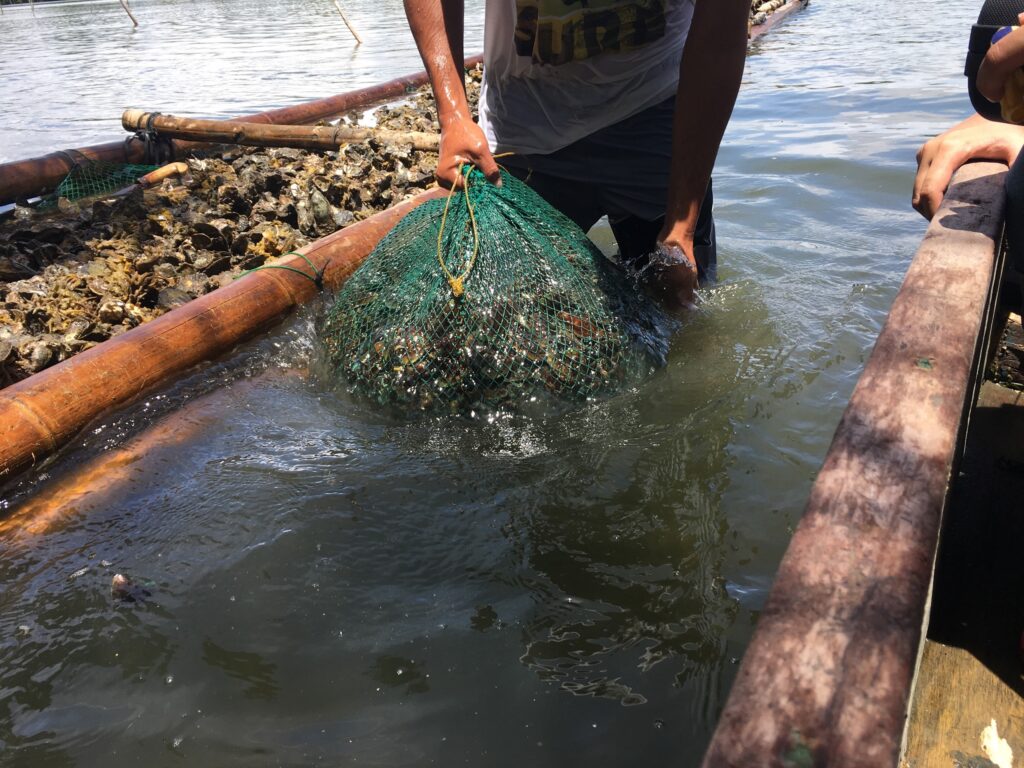Oysters and mussels may contain high loads of bacteria by the time they reach consumers which makes them unsafe for raw consumption
13 Feb 2024

Oysters and mussels are widely cultured shellfishes in the Philippines mostly intended for local consumption. After harvesting, they are transported live in gunny sacks. It takes long hours before they reach the intended markets. They are known to accumulate microorganisms, including harmful pathogens, due to their filter feeding nature. While other countries have existing criteria to determine the safety of shellfishes, the Philippines has yet to strictly enforce these guidelines locally. In this study, we determined the incidence of bacterial pathogen contamination in oysters and mussels from growing areas in Panay and Ivisan, Capiz as they were passed through the different channels of the supply chain. Results show that the initial counts in the shellfish of the bacteria E. coli were higher than the safety limit while another bacteria, Vibrio parahaemolyticus was also detected in high levels. The microbial counts were increasing while being transported in ambient temperatures. Other pathogens such as Salmonella and Vibrio cholerae were also present in the bivalves throughout the supply chain. The water and soil from the growing area were also found to contain these pathogens, however at lower levels. This confirms the ability of the shellfishes to accumulate and support the growth of the pathogens. By the time they reach the consumers, they contain higher loads of bacteria indicating that these may not be safe for raw consumption. The presence of the pathogens encourages the need to practice safety measures such as regular monitoring of culture areas, improving sanitary practices, and promoting thorough cooking of shellfishes.
Significance
Oysters and mussels are considered health food because of their high protein content and nutritive value. In the Philippines, they are are produced largely but mainly for local consumption. However, consumption of oysters and mussels is often implicated with foodborne illnesses and disease outbreaks since these organisms are immobile and filter-feeder in nature so they have the capacity to concentrate in their tissues biological particles such as bacteria, viruses and toxic dinoflagellates. Most of these pathogens are natural inhabitants of the culture environment or may
be introduced to the environment through run-off waters containing human or animal waste. Others may be introduced during food handling or processing and is therefore a function of food safety practices. This study investigated the incidence of foodborne bacterial contamination in fresh oysters and mussels along its supply chain. The results showed detection of pathogenic bacterial species from the environment which increased during transport until it reached the consumers’ table. The study could be a basis for development of management systems to decrease the risk of foodborne diseases from shellfishes.
Authors: Sharon N. Nuñal (Institute of Fish Processing Technology, College of Fisheries and Ocean Sciences, University of the Philippines Visayas), Karmelie Jane M. Monaya (Institute of Fish Processing Technology, College of Fisheries and Ocean Sciences, University of the Philippines Visayas), Camille Rose T. Mueda (Institute of Fish Processing Technology, College of Fisheries and Ocean Sciences, University of the Philippines Visayas) and Sheila Mae Santander-De Leon (Institute of Marine Fisheries and Oceanology, College of Fisheries and Ocean Sciences, University of the Philippines Visayas)
Read the full paper: https://www.sciencedirect.com/science/article/pii/S0362028X23067327
